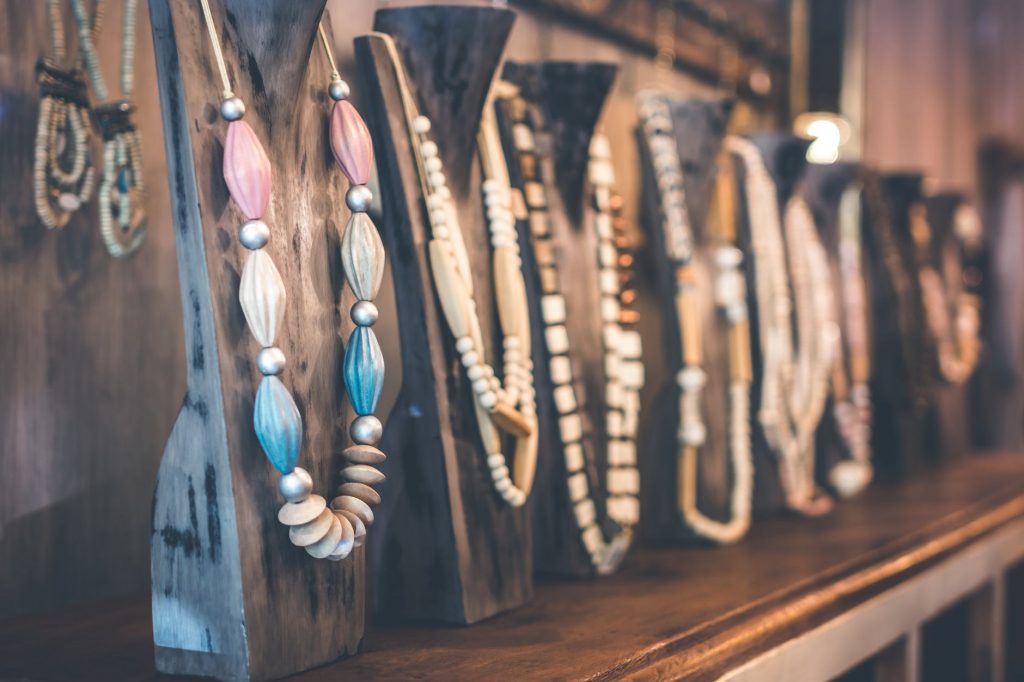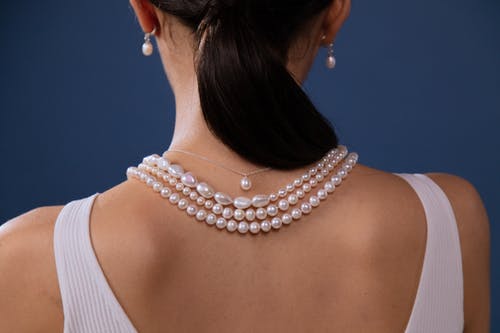In this modern world, nobody gives a second thought to wearing jewellery on, more often than not, a daily basis and men and women alike choose to wear necklaces to match their outfits, their personal style as well as changing their jewellery to suit the occasion and even the time of day.
If you have wondered where the, objectively perhaps slightly odd, tradition of wearing a piece of metal, leather, or cord around one’s neck came from, then look no further.
With that being said, continue reading for a concise history of the humble necklace, and its progression and evolution through the ages.

The Very First Necklace (On Record At Least)
Unbelievably, the very first necklaces have been discovered to date back all the way to The Stone Age and right back to the very first, sentient members of the human race.
Early Stone Age necklaces were, quite understandably, confined to consisting of wholly natural materials, such as animal sinew and vine, and it was not until the early development of string and weaving that more advanced necklaces began to take shape. With the creation, invention, and development of metal and cloth work, the former first appearing around the 8,7000 BC mark, necklaces began to appear considerably more ostentatious and aesthetically striking.
Fascinatingly, the word ‘pendant’ derives from the Latin root word ‘pendo’, which means ‘to hang’, which is why pendants are the decorated parts of a necklace that often hang down.
Necklaces In Ancient Civilisations
Ancient jewellery designers and makers used natural metals such as platinum (for the more respected and ‘higher’ class of people), silver, gold, electrum, and copper to craft their jewellery pieces.
Ancient Egypt has long since been regarded as one of the leading designers and wearers of ornate necklaces and favoured the use of gold for its rich and luxurious appearance. Ancient Romans used necklaces not only for fashionable accessories but also for a practical way of holding together their clothes; ancient Greeks favoured pearls, emeralds, and amethysts, and Sumerians (otherwise known as Mesopotamians) preferred to use silver as a base for their necklaces.

Modern Day Necklaces
These days, where fashion is entirely based on one’s personal style and often how daring a person is in wanting to express their personality through their clothing and accessories, necklaces can consist of virtually any material and can be as large and ostentatious or as small and subtle as the wearer likes.
Beautiful, ornate, and sentimental pieces from respected and family-ran jewellers such as Chapter 79 are often bought and enjoyed by a parent before handing it down to their children and creating a family heirloom. Or, if you have inherited a piece of jewellery that you don’t like, you can always contact a jeweller like this and discuss how to change it into something that you are going to wear and love for the rest of your life.
Additionally, costume necklaces, first introduced to the mainstream in the late 1960s, afford the wearer to showcase incredibly bold and expensive-looking necklaces without having to re-mortgage their house in order to be able to afford them.